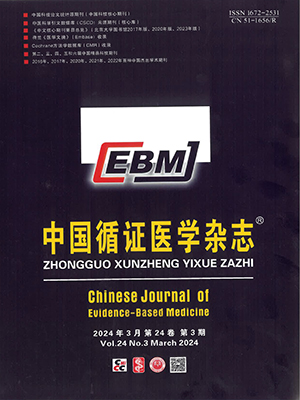Objective To assess the efficacy and safety of photodynamic therapy (PDT) for cutaneous bowen disease.
Methods We electronically searched PubMed, OVID, Cochrane Central Register of Controlled Trials, CBM, and CNKI databases from January, 1966 to March, 2010. The language was confined to English and Chinese. We screened the retrieved randomized controlled trials (RCTs) according to the predefined inclusion criteria, evaluated the quality of the included studies, and performed meta-analysis with RevMan 5.0.23 software.
Results Five RCTs were included; among all 496 skin leisions on 354 patients, 237 were in trial group while the other 259 were in control group. The healing rate of PDT was higher than that of both placebo (RR=4.16, 95%CI 1.69 to 10.25) and topical fluorouracil (RR=1.38, 95%CI 1.12 to 1.71), and was similar to that of cryotherapy. The cosmetic outcome evaluation of PDT was better than that of both cryotherapy (RR=1.48, 95%CI 1.18 to 1.87) and topical fluorouracil treatment (RR=1.51, 95%CI 1.05 to 2.15). The recurrence rate of PDT was lower than that of placebo (RR=0.29, 95%CI 0.10 to 0.86), and was similar with cryotherapy or topical fluorouracil treatment respectively. The healing rate of PDT with red light source was higher than that of PDT with green light (RR=1.29, 95%CI 1.02 to 1.65), and the recurrence rate of the former was lower than that of the latter (RR=0.20, 95%CI 0.05 to 0.87). There was no difference between 2-fold illumination scheme and single illumination scheme in the healing rate or the cosmetic outcome evaluation. The adverse effects include pain, cacesthesia, inflammatory reaction, hyperpigmentation, and crusting.
Conclusion The limited evidence indicates that the efficacy of PDT is better than those of placebo, cryotherapy or topical fluorouracil treatment, the recurrence rate of PDT is lower than that of placebo, and the adverse effects are similar comparing to control groups. The PDT with red light source is superior to PDT with green light source for having better effectiveness, less recurrence and similar adverse effects. The 2-fold illumination scheme and single illumination scheme have similar efficacy, but the former is more painful.
Citation: CHEN Jing,WU Yan,LIU Mei,QU Le,YANG Zhenhai,CHEN Hongduo,HE Chundi. Efficacy and Safety of Photodynamic Therapy on Cutaneous Bowen Disease: A Systematic Review. Chinese Journal of Evidence-Based Medicine, 2010, 10(11): 1302-1307. doi: 10.7507/1672-2531.20100587 Copy




